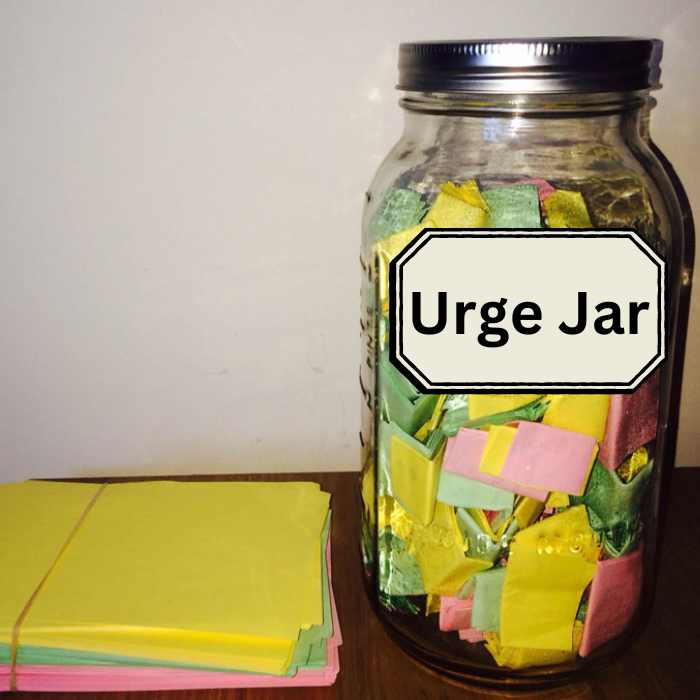 (That can be helpful in dealing with urges to use drugs, too)
(That can be helpful in dealing with urges to use drugs, too)
While there is no magic bullet to stop urges to drink or cravings for alcohol, there are ways to manage and reduce urges or cravings to drink.
In this article, we provide 11 empirically validated ways to help you manage urges and cravings:
- Keep Track
- Avoid Triggers to Drinking (or overdrinking)
- Distract Yourself
- Question the Urge
- The DISARM Method
- Drink Refusal
- Medications
- Meditation
- Urge Surfing
- Studying the Urge
- Countering the Urge
Some of these tips may be more helpful early in your efforts to change your drinking habits, whether your goal is to cut back or to stop drinking entirely. Other strategies we consider somewhat more advanced. These tips can be helpful for those making changes in their drinking on their own and not in an alcohol use disorder treatment program.
The good news is that using these tips can improve your ability to manage and reduce urges and cravings overall.
Looking for a way to track your urges and cravings? Be sure to check out the CheckUp & Choices online program. The program provides an urge tracker, which is a great way to monitor and manage your urges as they come and go. And you’ll be able to see your progress in dealing with them as they lessen over time.
1. Keeping Track
Here are some good reasons to keep track of your urges:
- Keeping track can help you identify your “triggers” to drinking.
- Keeping track can help you realize that they aren’t always there or getting worse. Urges come and go. Fortunately, while urges may make you uncomfortable, they can’t hurt you.
- You can sometimes use urges to your benefit. For instance, if you have an urge to drink when you’re feeling anxious, the urge can be a signal to figure out better ways to manage your feelings of anxiety and how you deal with stress.
In our CheckUpandChoices.com app, we ask people to keep track of the date, time, intensity (1-10), and duration. This allows you to realize that urges increase and decrease in intensity over time. And keeping track over time gives you the chance to see if your efforts to reduce your urges and cravings are working. Or not.
2. Avoid Triggers
This can be a helpful strategy early in your efforts to change your drinking and manage your urges. If, for example, you usually drink Friday afternoons or evenings after work with drinking buddies, make plans to do something else during that time with other friends or family members who aren’t into drinking or drinking heavily. Set up a dinner date with your spouse. Go work out. Have friends over for dinner that you make (unless drinking heavily while you’re cooking is part of your routine). These are just examples.
3. Distract Yourself
Sometimes you can’t avoid triggers which may be feelings you have or a physical condition that comes on from time to time. Once you experience the urge, distract yourself with something that takes your attention. Then check back in with yourself in 30-45 minutes and see if the urge’s intensity has changed. If the first distraction isn’t helpful, try another. Or use another strategy altogether.
4. Question the Urge
Think of the urge as a cue, a signal. This signal is telling you to have a drink, but it’s not controlling you. While having an urge can be uncomfortable, it won’t hurt you. With practice, the urge can become a signal to use an urge coping strategy.
5. The DISARM Method
Another strategy is to DISARM your urges. DISARM is both popular and widely used in SMART Recovery®. It was developed by Joseph Gerstein, M.D., a co-founder of SMART Recovery (and a good friend of mine). Here are the steps.
1. Name the Urge
Destructive self-talk is not you, it’s your enemy. Name the urge as if it were another being. Pick a name for your urges that’s imaginative, strong, and meaningful to you. That little voice in your head that badgers and coaxes you. Label it. Some call it “The Inner Brat,” “The Alcohol Salesman,” “The Lobbyist,” “The Terrorist,” “The Whiner,” or just “The Enemy.” Pick a name that fits your experience with it.
2. Awareness
Develop an early warning habit. Learn to recognize the urge when it first comes calling. Discover your earliest red flag signals. Don’t be caught off guard. Nipping temptation in the bud is easier than stopping it when it’s got a full head of steam.
3. Refusal
Immediately, firmly refuse. Don’t even consider the possibility as a choice. You have already made your decision not to drink. You’ve made it your top priority. On general principle, you don’t have to reason it out yet again. Whenever you get the idea to resume drinking, you can tell that idea to go to hell. You don’t need debate.
6. Drink Refusal
Refusing drinks in a way that is assertive without being aggressive is a skill and can help you head off people pressuring you to drink (or drink heavily). Here are the elements:
- Make eye contact. It indicates that you mean what you say.
- Reply in a clear, firm voice. Don’t hesitate.
- Say “No,” then change the subject. Suggest something else. “I’d like a tonic and lime.”
- If they keep pushing you, ask them to stop. “If you want to be my friend, chill out.”
- Realize you don’t have to feel guilty about not drinking or stopping if you’ve reached your limit if your goal is moderation. It’s your right and your choice.
- Practice, practice, practice your replies. Get to the point where you’re comfortable in saying no and changing the subject.
7. Medication
Naltrexone is a prescription medication that can reduce your urges and cravings to drink or to drink heavily.
It’s available as a pill (generic) and as a once-monthly injection (Vivitrol) given in a physician’s office. The generic pills are relatively inexpensive. Vivitrol is expensive but does not require a daily decision. While the FDA has not approved naltrexone for moderate drinking in the U.S., it is used for this purpose in Europe. Your primary care provider may or may not be willing to prescribe you naltrexone for cutting back on your drinking if that is your goal.
Click here to learn more about medication-assisted treatment (MAT).
8. Meditation
Meditation and mindfulness are two hot topics these days because when learned and practiced can they reduce urges and cravings, as well as help develop a sense of calmness and well-being. A colleague of mine, Dr. Sarah Bowen, has generously posted a page of resources for clients interested in meditation and mindfulness at https://www.mindfulrp.com/For-Clients.html.If you’ll scroll down to the bottom of that page, you’ll see 10 different MP3 files with the option of male or female voices. We highly recommend these free downloads.
9. Urge Surfing
The intensity of urges increases and decreases over time. Think about these ebbs and flows as though they were waves in the ocean. Relax. Let yourself ride the swell. Feel how they come and go. The urge loses its grip on you when you realize it won’t last forever. Dr. Bowen’s MP3 files (link above) offer an excellent “urge surfing” meditation.
10. Studying the Urge
Both avoiding and distraction can work well, but if that’s all you do, they can leave you tired and fearful of urges. To overcome urges and not be fearful of them, you’ll need more advanced methods. You’ll need to experience the urge, but not act on it, until the urge lessens and goes away. And it will.
So, as you gain confidence in not drinking or overdrinking, there’s another step you can take. Carefully expose yourself to these triggers while you’re with someone who’s supportive of you. This can help you feel confident that you won’t act on an urge you might experience. When you can sit with the urge comfortably, try it alone.
Look at the urge from an objective standpoint. First, stop and notice your thoughts and feelings. This can take practice, so be patient. Think about what the urge does to you. How does it affect your heart rate? Your level of tension or nervousness? What does it lead you to think?
Ask yourself, “While these reactions may be unpleasant, will I really go out of my mind if I don’t give in?” Note how these reactions vary across time as you respond passively to the urge.
11. Countering the Urge
Talk to yourself. Out loud if possible. What are your reasons for changing? How good will you feel later if you’ve been successful and not given into the urge?
Consider how giving into an urge keeps it alive while not giving in to the urge slowly kills it. While you can’t make the urge go away, you can see it for what it is. It is all that remains of your relationship with alcohol.
Sometimes you can use the urge to help identify a problem. Is something going on in your life that’s creating some negative feelings?
You can’t always change the situation that’s creating these feelings. But you may be able to change how you respond. One way or another, if you can change your response to the urge, you can then change your response to the negative feelings.
Looking for a way to track your urges and cravings?
Be sure to check out the CheckUp & Choices online program. The program provides an urge tracker, which is a great way to monitor and manage your urges as they come and go. And you’ll be able to see your progress in dealing with them as they lessen over time.
About CheckUp & Choices
CheckUp & Choices is a confidential, self-guided, online program that is clinically proven to help SMART Recovery participants. The “CheckUp” includes a comprehensive alcohol self-assessment. The “Choices” programs include 12+ weeks of ongoing motivational exercises; drink, mood and urge trackers; guided emails; and change plans. With Checkup & Choices, you are never labeled, and you will be treated with respect and without judgment. Get started with CheckUp & Choices today.


![[Video] Life Beyond Addiction – C.C.](https://smartrecovery.org/hubfs/Imported_Blog_Media/LBA-CC-3x2-11-1-2.png)
